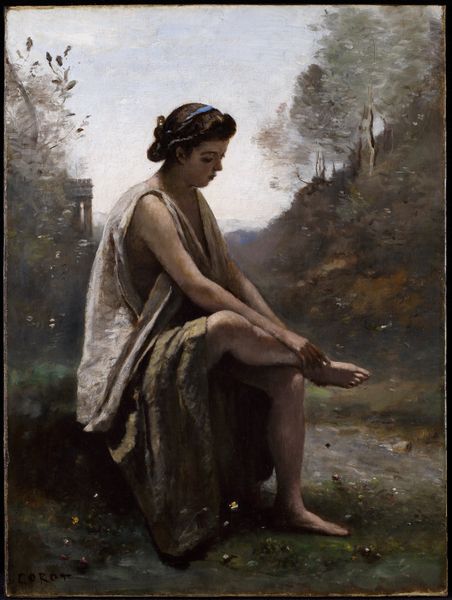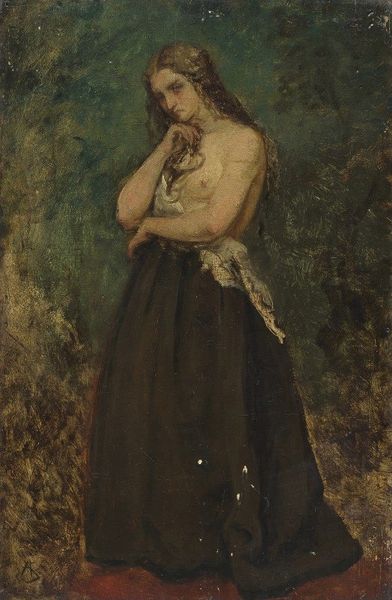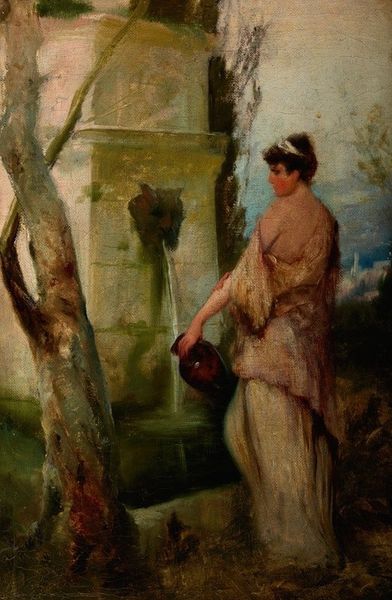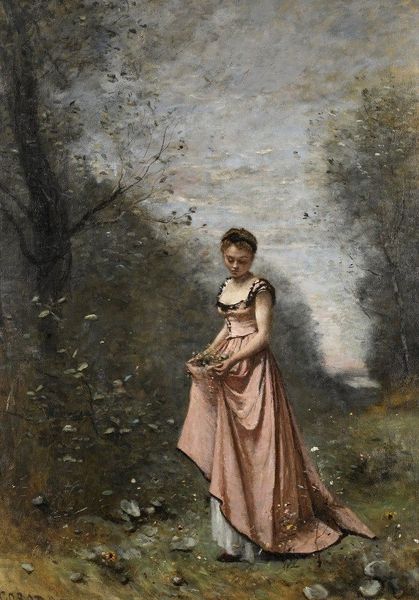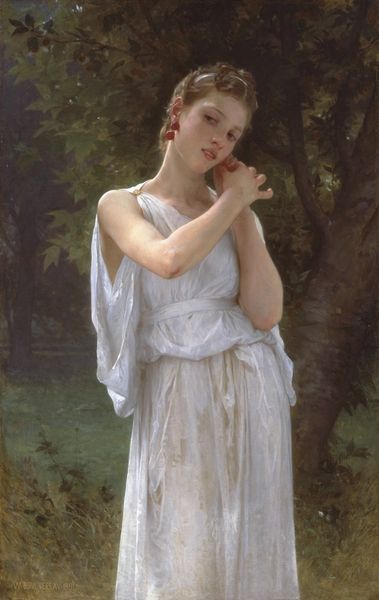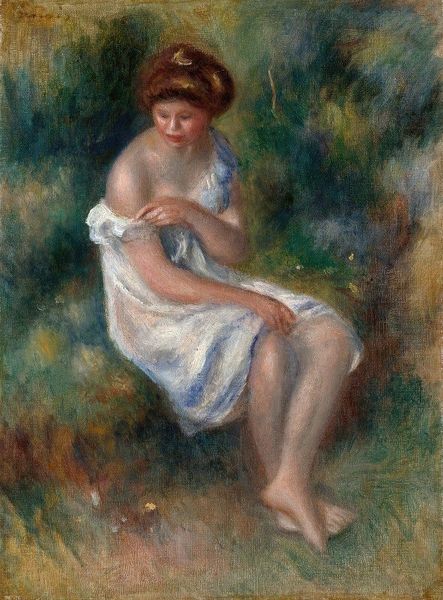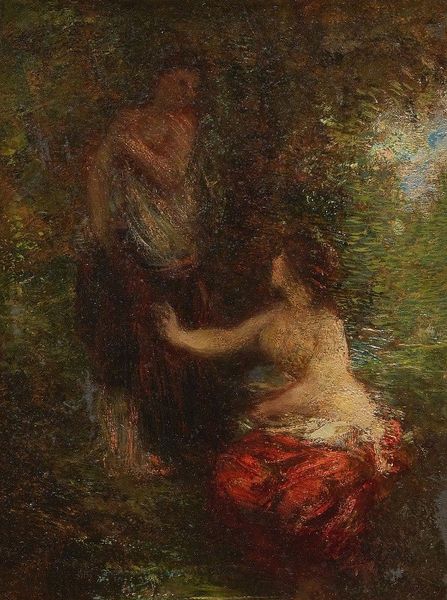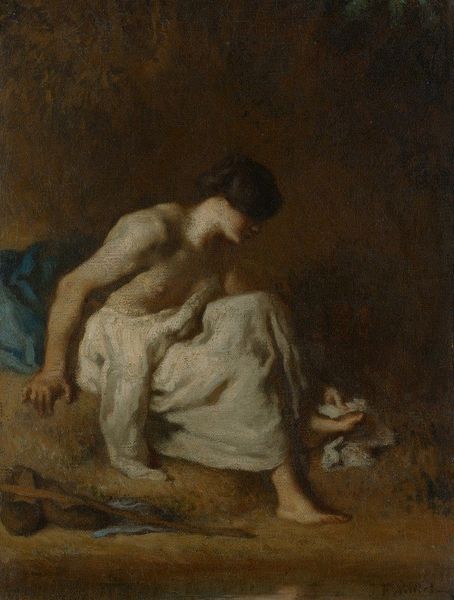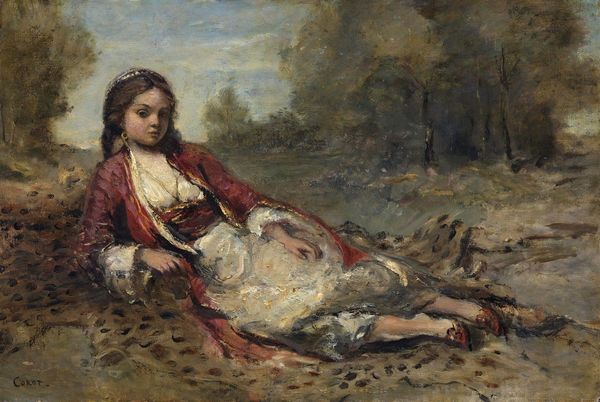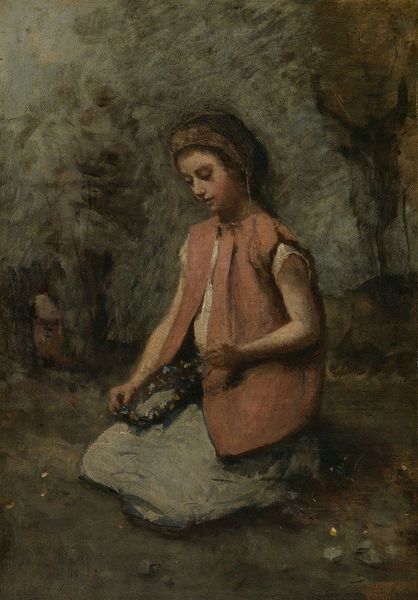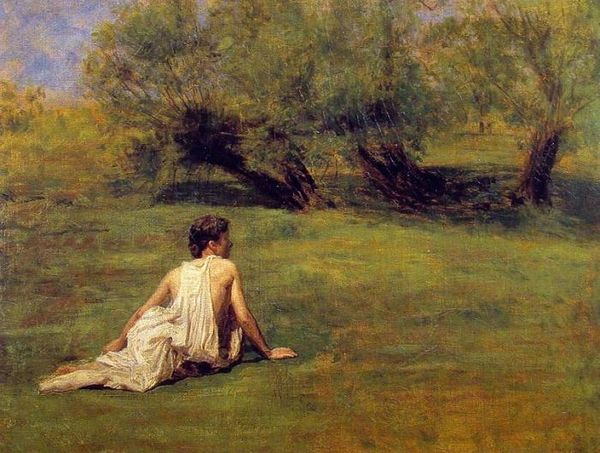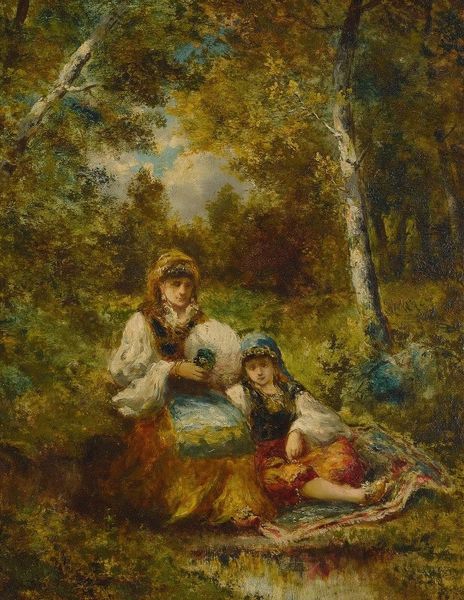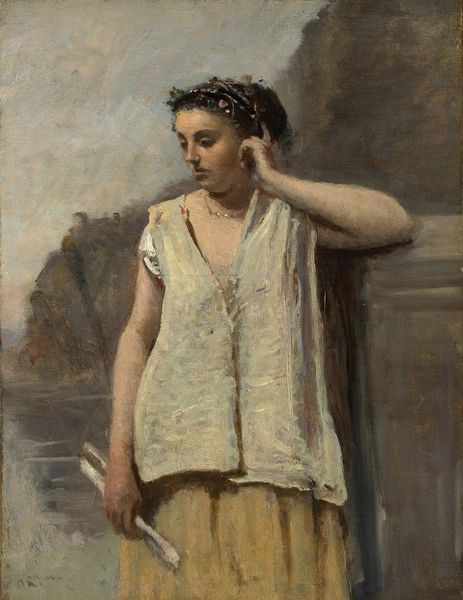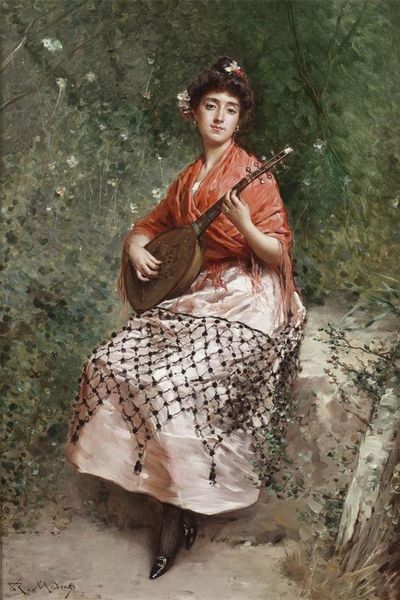
Copyright: Public Domain: Artvee
Editor: We're looking at "Wounded Eurydice," an oil painting by Camille Corot, created sometime between 1868 and 1870. The scene has this melancholy stillness. What do you make of it? Curator: Well, it's fascinating how Corot appropriates a classical myth, Eurydice's second death, into a very modern artistic and social context. What are we meant to understand, staging a mythological figure within a contemporary setting and with such…domestic intimacy? Is this, perhaps, about the wounded soul of modernity itself? Editor: You think he's using Eurydice as a stand-in for something larger? Curator: Absolutely. Consider the period: France recovering from revolution, industrialization reshaping society. Romanticism had given way to Realism. But, does this not blend the conventions of both? The academic nudes with a readily understandable story for the salons and a modern Realist-influenced aesthetic? There’s tension here. Does that make sense? Editor: It does. So, Corot is potentially using a myth to reflect contemporary issues, like societal trauma, maybe, filtered through a popular painting genre. Curator: Precisely. The museum culture of the time also elevated classical themes, reinforcing a specific, often conservative, cultural narrative. How might Corot’s portrayal support or subvert such ideals? And what kind of public response would such a portrayal elicit in that era? Editor: I hadn’t considered how the art world itself shaped the message. Seeing it as more than just a painting of a mythological scene offers a whole new depth. Curator: It certainly provides food for thought about the public role of art then and even now. And hopefully underscores that cultural artifacts are more often in dialogue with social events than speaking from some isolated or objective aesthetic bubble.
Comments
No comments
Be the first to comment and join the conversation on the ultimate creative platform.
